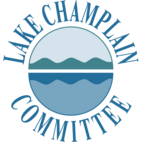Low-level Jets
September 2010

On October 31, 2009 winds buffeted the Champlain Valley stirring the leaves of Halloween. The winds were sustained over a twelve hour period. The next day, the Plattsburgh Press Republican reported wind damage from throughout Essex and Clinton Counties. The cause of the winds was a low-level jet that had developed over Lake Champlain.
The National Weather Service defines a low-level jet as a region of relatively strong winds in the lower part of the atmosphere, and they described the phenomenon in their Champlain Weather Chronicle of October 2008. Low-level jets develop about five to ten times per year in the region.
Though the exact mechanism is not entirely understood, they occur when high pressure systems out over the Atlantic Ocean create southerly winds. The generalized region-wide winds become channelized by the north-south orientation of the Champlain Valley. This “forced channeling” of the winds constricts and accelerates the flow of air.
Jets can occur at any time of the year but are they are both more frequent and stronger between late summer and early winter. At this time the difference in temperature between the water and the air above is greatest. The greater the difference in temperature between the warm lake water and cooler air above, the greater the potential to mix stronger winds aloft down to the surface of the lake. In late winter, ice dampens the temperature difference and thus the winds. In spring, the colder lake water relative to the air results in stable lower air masses and any winds that develop at high elevations don’t mix down to the surface.
For the same reason, jets often reach their maximum strength at night. At that time, the lake warms the air closest to the earth creating a greater temperature differential compared to the cold air aloft.
The jet is also displaced toward the east within the Champlain Valley. This is likely a consequence of the mountains. Whereas the Adirondacks sit nearly adjacent to the lake, the Green Mountains are further away.
Wind speeds during low level jet events typically reach 25 to 40 miles per hour, strong enough for the Weather Service to issue wind advisories. The event of October 2009 saw gusts close to 60 miles per hour, strong enough to tear shingles from roofs and even uproot trees.
Wind speeds like this create significant hazards for boaters on Lake Champlain. Wave heights routinely reach two to five feet with swells up to seven feet. (Wave heights are estimated. The National Weather Service has been striving to improve their marine forecasting for Lake Champlain, but wave-height predictions are particularly difficult due to a lack of weather buoys on the lake.)
So how are boaters to prepare and anticipate such events? One strategy is to follow the meteorologists’ rule of thumb about wind speeds in the region. Whatever the speed of wind gusts (over a three to five second duration) at the Burlington Airport meteorological station, that will be the speed of sustained winds (measured over two minutes) at the Colchester Reef station.
A better strategy is to consult the Recreational Forecasts for Lake Champlain. Additionally, whenever low-level jet events occur or are expected, the National Weather Service in Burlington coordinates with the U.S. Coast Guard to provide up-to-date marine forecast broadcasts on NOAA Weather Radio. When planning a lake outing it is always important to prepare for the weather conditions and recognize that they can change rapidly.
Lake Look is a monthly natural history column produced by the Lake Champlain Committee (LCC). Formed in 1963, LCC is the only bi-state organization solely dedicated to protecting Lake Champlain’s health and accessibility. LCC uses science-based advocacy, education, and collaborative action to protect and restore water quality, safeguard natural habitats, foster stewardship, and ensure recreational access.
Get involved by joining LCC using our website secure form (at www.lakechamplaincommittee.org), or mail your contribution (Lake Champlain Committee, 208 Flynn Avenue - BLDG 3 - STUDIO 3-F, Burlington, VT 05401), or contact us at (802) 658-1414, or lcc@lakechamplaincommittee.org for more information.
